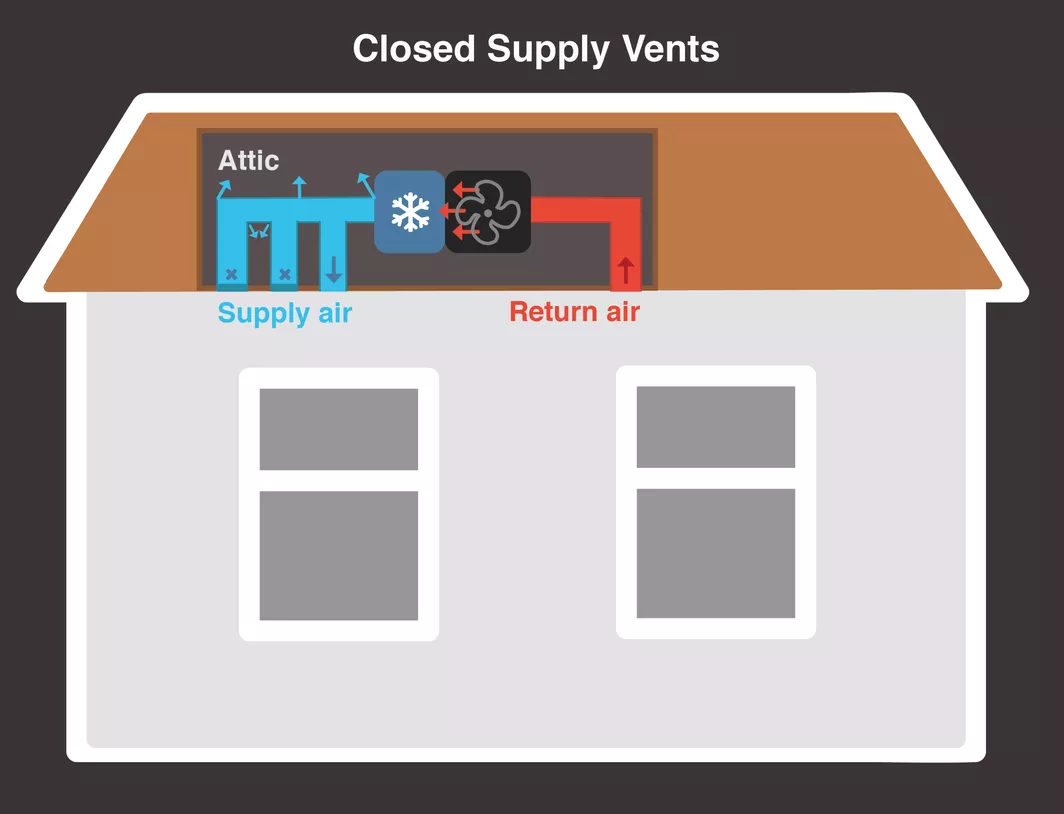The Basics of Air Supply Registers and Return Grilles

Air supply registers and return grilles are two essential components of HVAC systems that work together to regulate airflow and maintain indoor comfort. An HVAC system can only operate efficiently if its air supply register and return grilles are working properly.
An air supply register distributes conditioned air throughout a room, while the return grilles remove air from the room and return it to the HVAC system for reconditioning.
Proper placement and maintenance of both these parts are key to maximizing HVAC performance.
Keep reading as we cover more about these HVAC system components, including:
- What are air supply registers and return grilles?
- How supply and return systems work together
- Common placement considerations for registers and grilles
- Signs your airflow system may need attention
- Maintaining optimal airflow in your home
By the end of this blog, you’ll be an expert on everything there is to know about air supply registers and return grilles.
Maximize Comfort With Expert HVAC Solutions From Jon Wayne!
If you need cooling tune-up services, look no further! Jon Wayne will get your air conditioning back in working order so your whole family can be comfortable again. Our NATE-certified technicians are professional and friendly. We pride ourselves on getting the job done right the first time so our customers don’t have to deal with repeat labor costs.
What Are Air Supply Registers and Return Grilles?
Before we dive into the details, let's get a clear understanding of each component:
- Air supply registers. These vents distribute conditioned air into the rooms and are often equipped with adjustable dampers to control airflow direction and volume.
- Return grilles. Return grille HVAC openings draw air from the rooms back into the HVAC system for reconditioning, ensuring continuous airflow. They don't have dampers, which helps to ensure unrestricted airflow.
How Supply and Return Systems Work Together
Supply registers push heated or cooled air into living spaces, while return grilles pull air back into the HVAC system for reconditioning. This cycle creates a balanced airflow that prevents pressure imbalances, ensuring consistent room temperatures and reducing strain on the system. Together, these components have complementary roles. An HVAC system can't work efficiently if either one is broken, leading to reduced comfort and efficiency.
Each room in your home should have a return air grille, as well as a supply register. Why does each room have a return grille? This ensures consistent, conditioned air throughout the home. If you have rooms that lack ventilation, consider a professional evaluation to improve your comfort.
Common Placement Considerations for Registers and Grilles
Here are some other practical insights into ideal placement for optimal performance:
- Supply registers: Typically located near windows or exterior walls to combat heat loss or gain and ensure even temperature distribution
- Return grilles: Often positioned centrally in a room or hallway to draw air effectively from multiple areas
Ensure furniture, curtains, or rugs don’t block vents, as this can hinder airflow and system performance. Proper supply and return vent placement ensures consistent air circulation and maximizes air conditioner efficiency.
Signs Your Airflow System May Need Attention
Here are some common indicators of issues with supply registers or return grilles.
- Uneven temperatures between rooms
- Unusual noises coming from vents
- Decreased performance from the system
- Excessive dust buildup around registers or grilles
- Weak airflow from supply registers or inadequate suction at return grilles
Homeowners should address these issues promptly to avoid further strain on the system. Waiting too long can lead to your system breaking down beyond repair.
Maintaining Optimal Airflow in Your Home
You can take some preventative steps to reduce the chance of breakdowns. Here are some maintenance practices for ensuring efficient airflow:
- Clean grilles and registers regularly to prevent dust accumulation.
- Schedule HVAC inspections to check for airflow imbalances or blockages on an annual basis (or as soon as problems arise).
- Ensure vents remain unobstructed for optimal performance.
- If your home doesn't have a return register in every room, consider getting them installed.
Proper care is worth the effort as it can extend the life of the HVAC system, improve indoor air quality, and enhance energy efficiency.
Optimize Your HVAC System Today — Contact Jon Wayne!
Your home can be a comfortable temperature again in no time with a cooling tune-up. And you can trust the technicians at Jon Wayne to get the job done right. But don’t just take our word for it. We have thousands of 5-star reviews that demonstrate just how much our customers love our work.

